A lot of snobs turned their backs on Volkswagen Philippines when the brand started importing cars from China into the PH. They say they want those from Germany, though that’s only a want as they didn’t really buy VW vehicles before. China cars are low quality, they said from their mainland-produced iPhones.
However, the first batch of China-sourced VWs was impressive to me. The Santana, Lavida, and Lamando continued where the Germans left off. They were robust, have good driving dynamics, and were competitively priced for the features they had (at the time). What stood out to me was the Santana base model with its no frills approach, affordable price, classy look, and sporty driving characteristic (I miss that short shifter!).
As the country shifted to more crossovers and people became more accepting of Chinese cars, Volkswagen then brought in the T-Cross. It was Volkswagen trying to dip their toes into the new generation of car buyers. Young and hip, the T-Cross was a vibrant about-face from the brand’s signature monochrome approach and straightforward styling. In my opinion though, it focused too much on appealing to a younger generation that it missed other aspects to make it more enticing to a wider audience.
Enter the Volkswagen Tharu. This compact crossover is Volkswagen’s second take on a vibrant styling but with revised implementations. The top SEL trim I’ve driven is priced in the range of mid-trim SUVs in the market, and this is only a compact crossover. Yet, I am all praises with this new offering from Volkswagen.
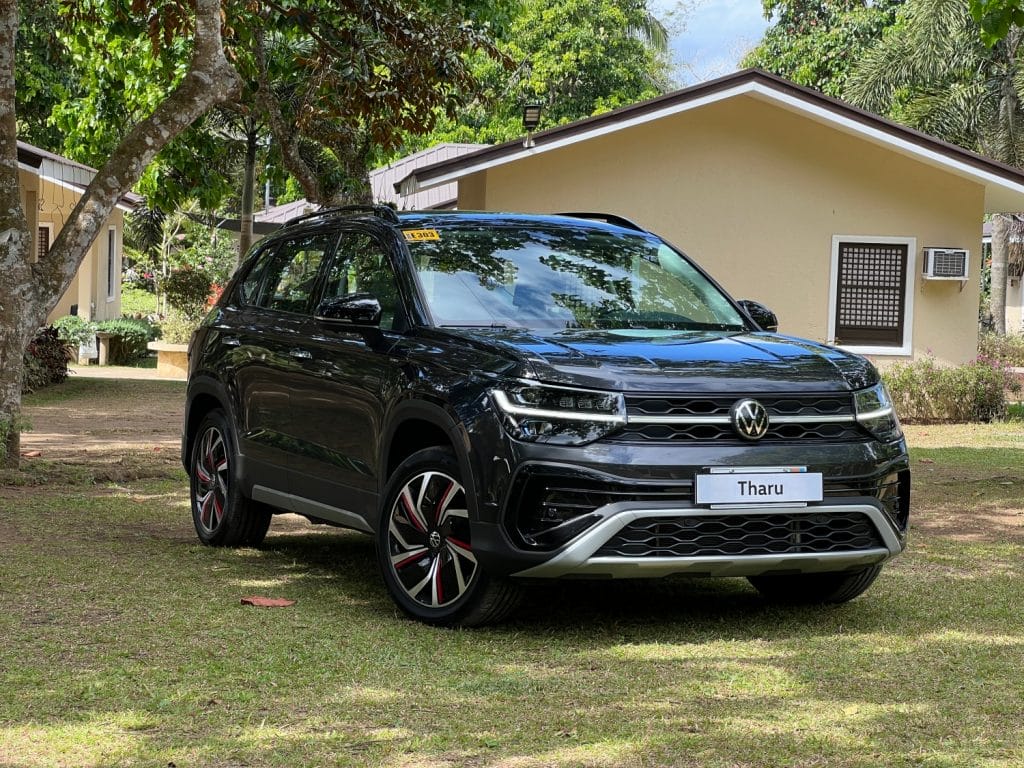
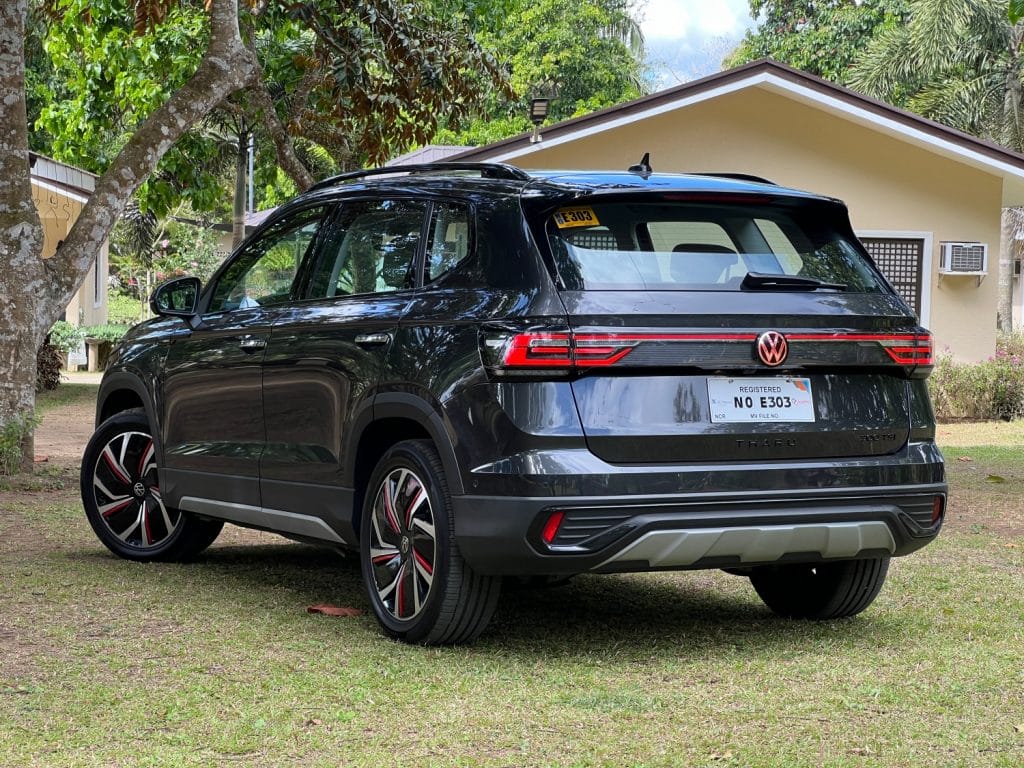
At first glance, it’s easy to see the silhouette of the smaller T-Cross. The Tharu took that one notch higher with its small revisions like the black fog light housing, simplified skid plate, lightbar on the grille, light bar at the tailgate, lighted VW logo, and this SEL has a red accent on the wheel covers.
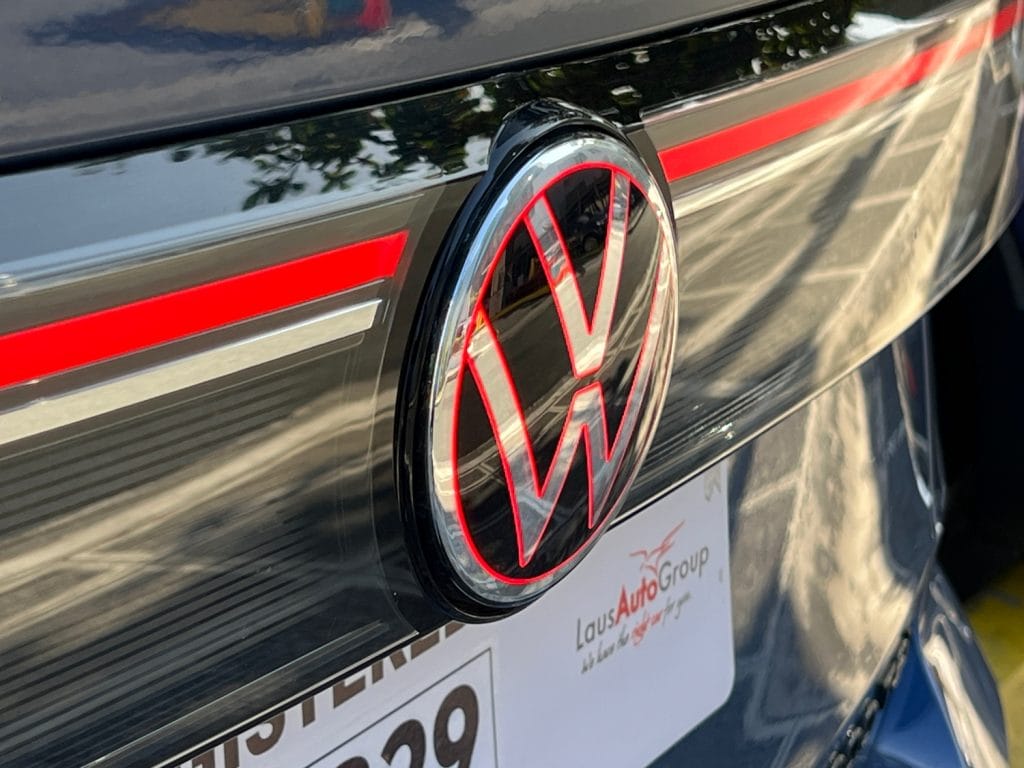
Just like the T-Cross, the Tharu has an interior theme that’s dependent on the exterior color and variant you chose. You’ll either get the Deep Blue/Light Grey with Copper Accent, Deep Blue/Light Grey with Red Accent, and the SEL exclusive Polytech Blue comes with a Deep Blue/Pine Green with Silver Accent.
What’s great this time around are the muted hues they chose, and the more subdued implementation in the interior accents. It resulted in an easier to absorb theme compared to the outlandish splashes of vibrant color that the T-Cross has. Combine that with soft touch points in the right places and I think Volkswagen finally found the balance of historic styling and modern appeal in the Tharu.
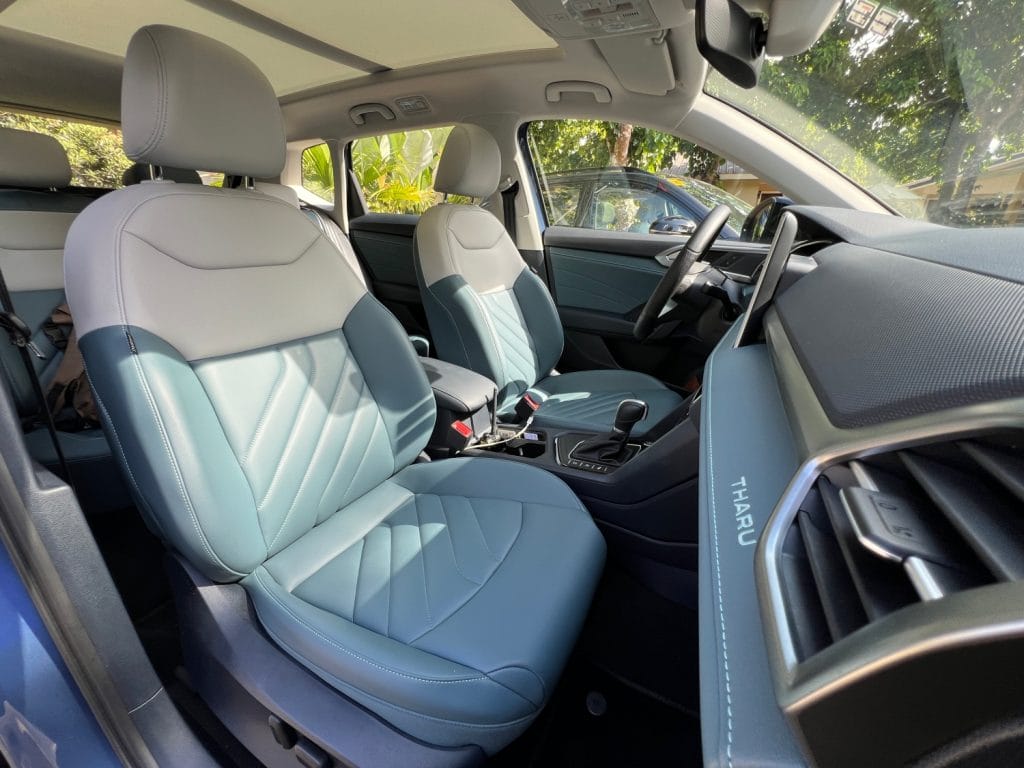
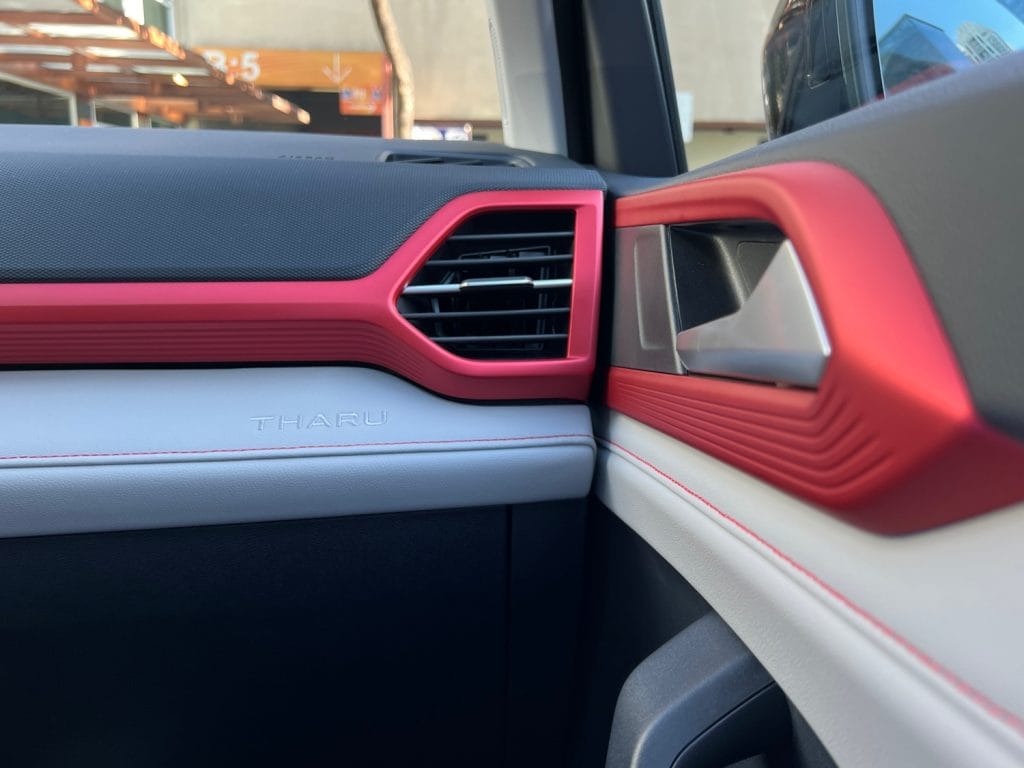
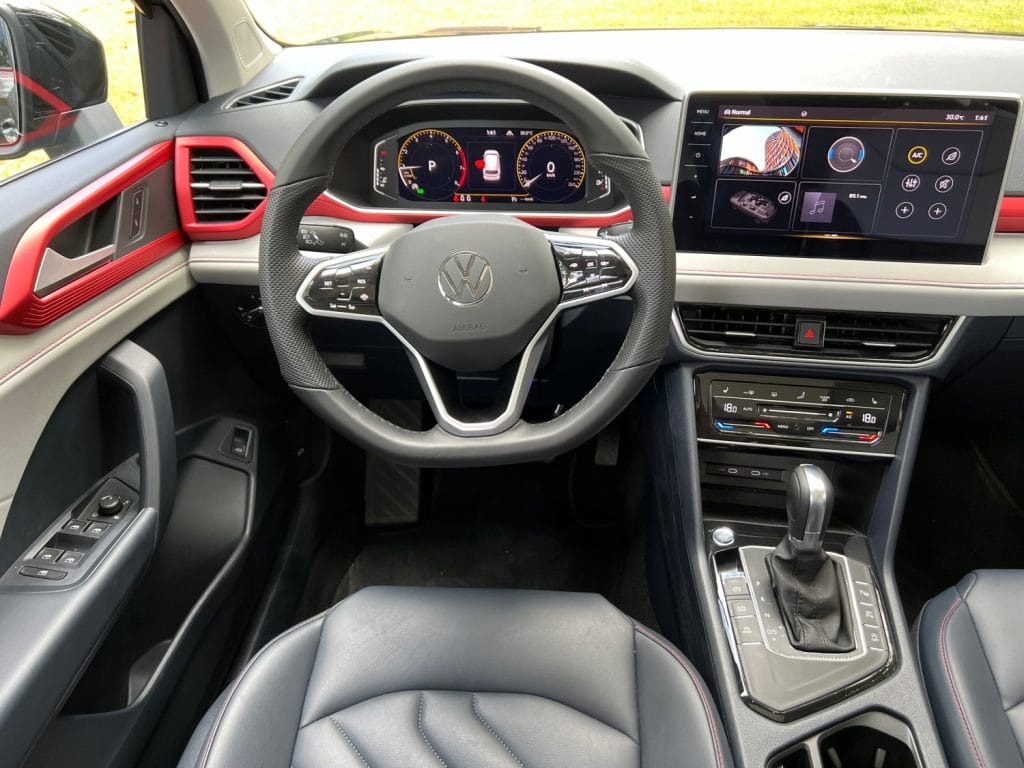
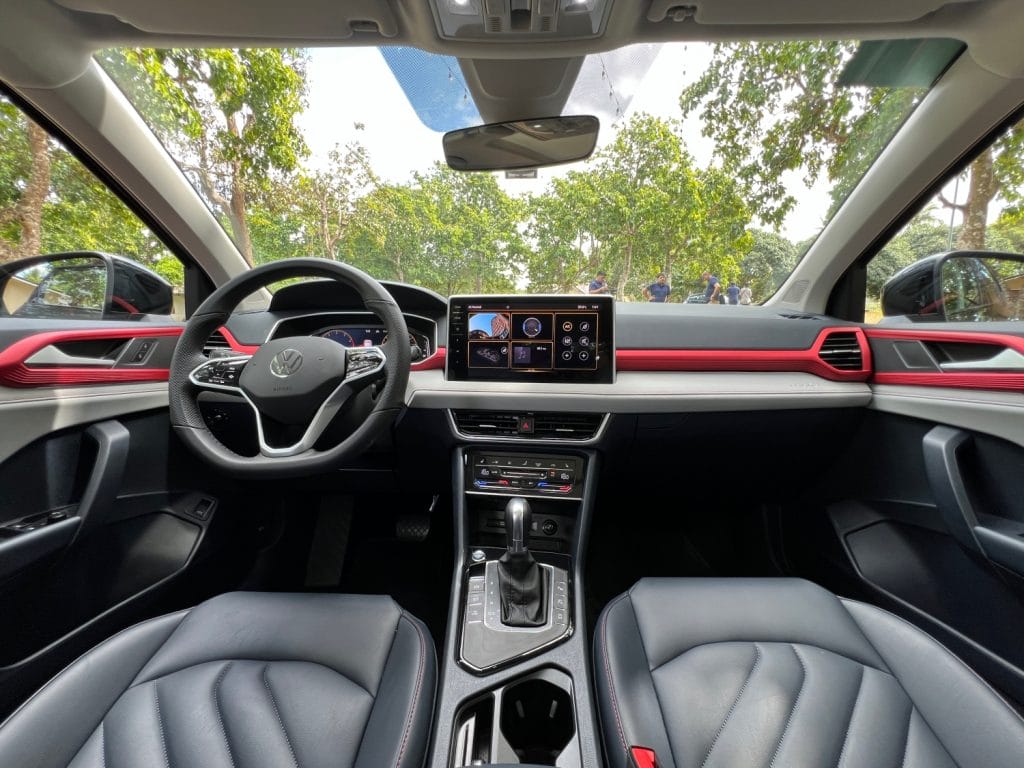
Where the Tharu really excels is its attention to detail. If you can set aside its thin sunroof cover, you’ll enjoy the Tharu through and through. Rear occupants will appreciate the rear air vents. It’s placed a bit higher than usual, and the vents can do an angle that allows air to pass above my knee and onto my face. They’ve also included it in the fan control section upfront. That means if the front occupants adjust the fan control for more air, the air out of the rear air vents will also increase. Something other cars with rear air vents don’t really do.
Ride quality is also impeccable. It’s firm but softens up in the right situations. The cabin is also quiet even at the speed limit despite the thin sunroof cover, and the seats are bolstered well to keep you in place.
Driving the Tharu is a point of no return. The 1.5-liter turbo engine has enough grunt even in Eco mode, or you can opt to play with the manual override on the shifter. Sport unleashes the full capability of the engine and makes the throttle more responsive. In either case, the power plant didn’t feel underpowered even with five adults inside.
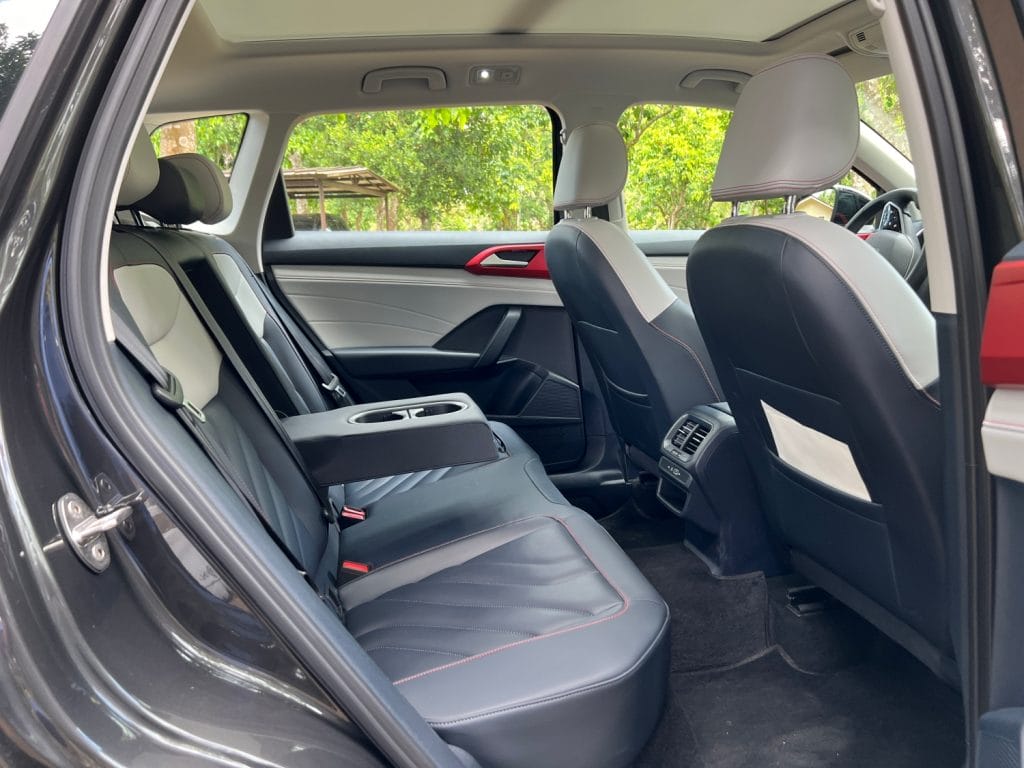
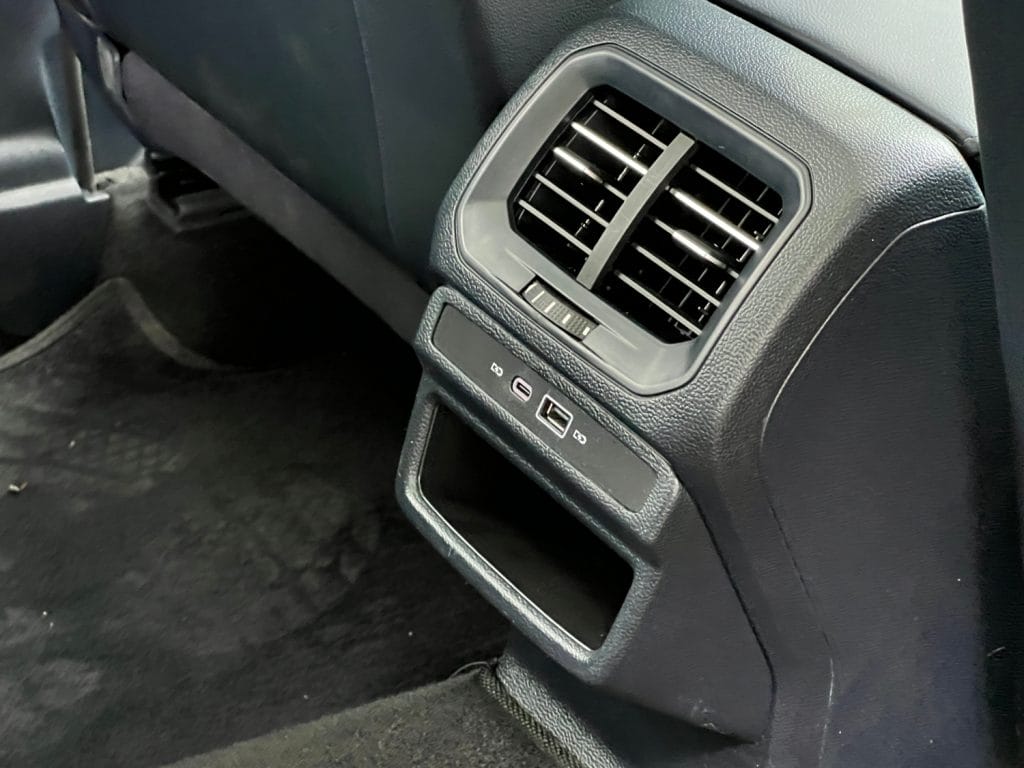
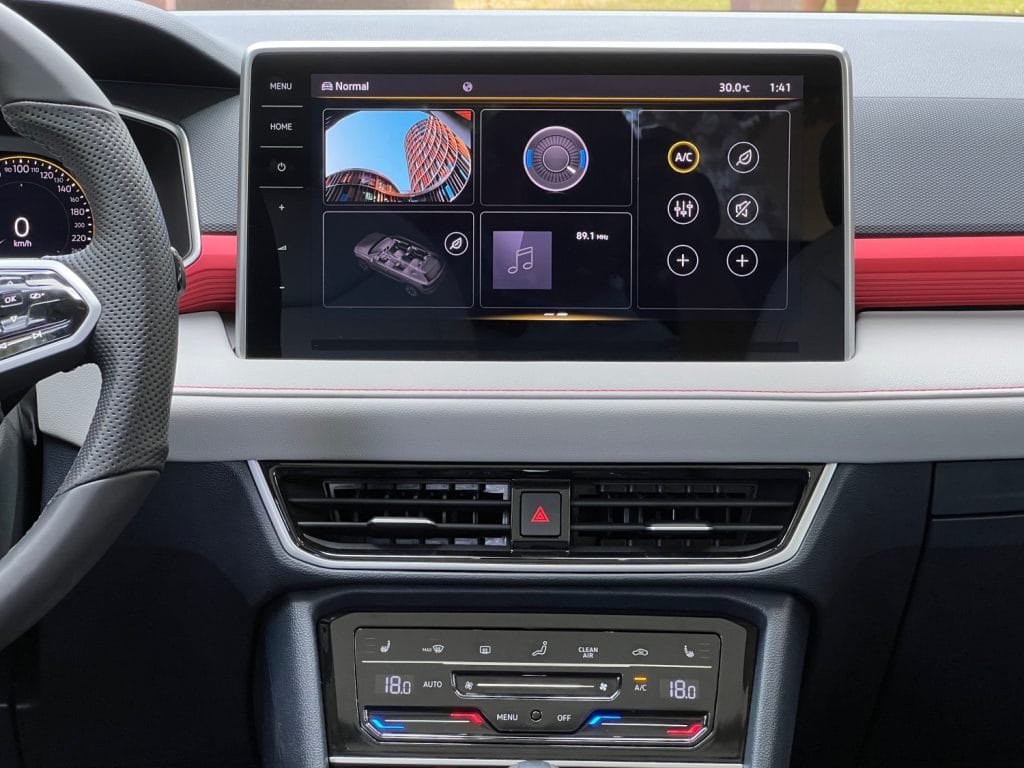
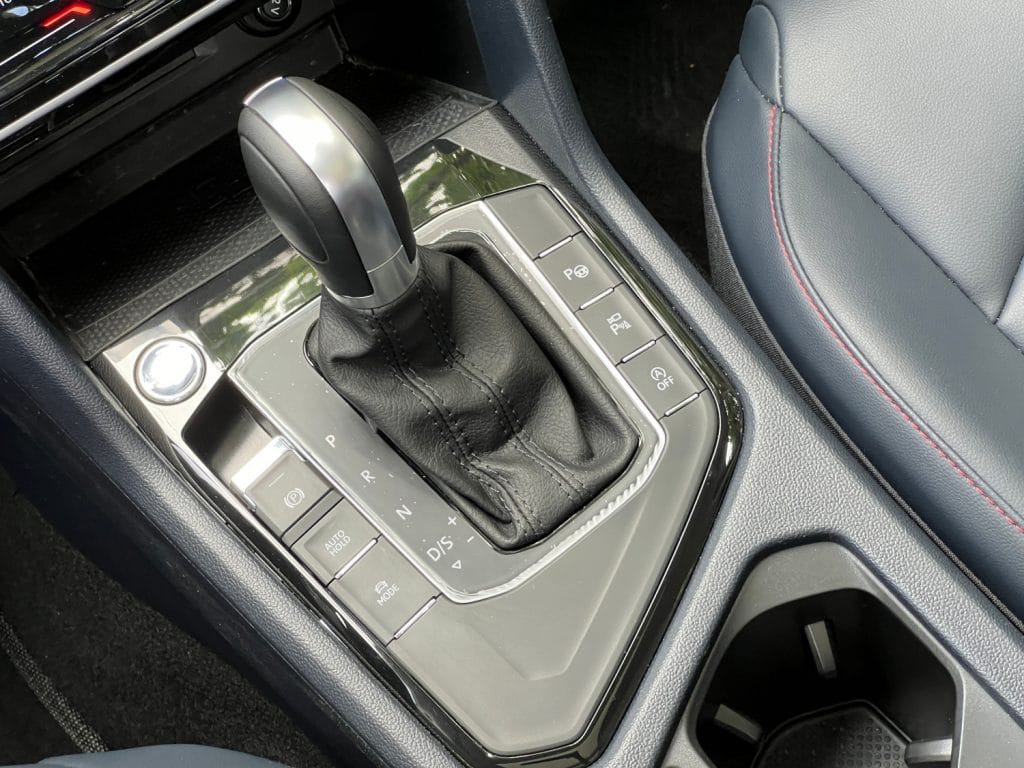
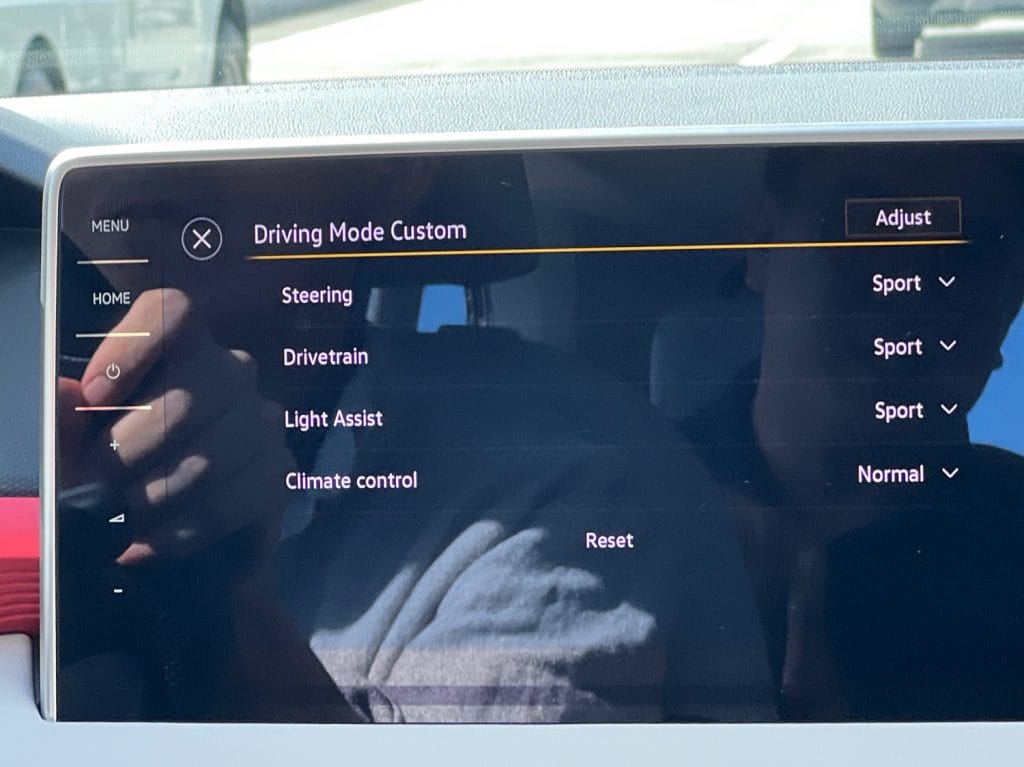
What’s great with the Tharu is it comes with a Custom drive mode, allowing you to have your preferred response on the steering, drivetrain, and even lighting.
Touch-based controls are not my friends but the Tharu’s sliding fan control is easy to use even while driving. Alternatively, you can touch the end points to increase or decrease fan speed. The touch-buttons on the steering wheel are also less sensitive, so you don’t unnecessarily change things while keeping your hands on the wheel during a turn.
I also liked how Volkswagen retained all airbags between the two variants and shared most bits including the cruise control with speed limiter. The only advantages this SEL had are front sensors, active parking system, and 360-camera.
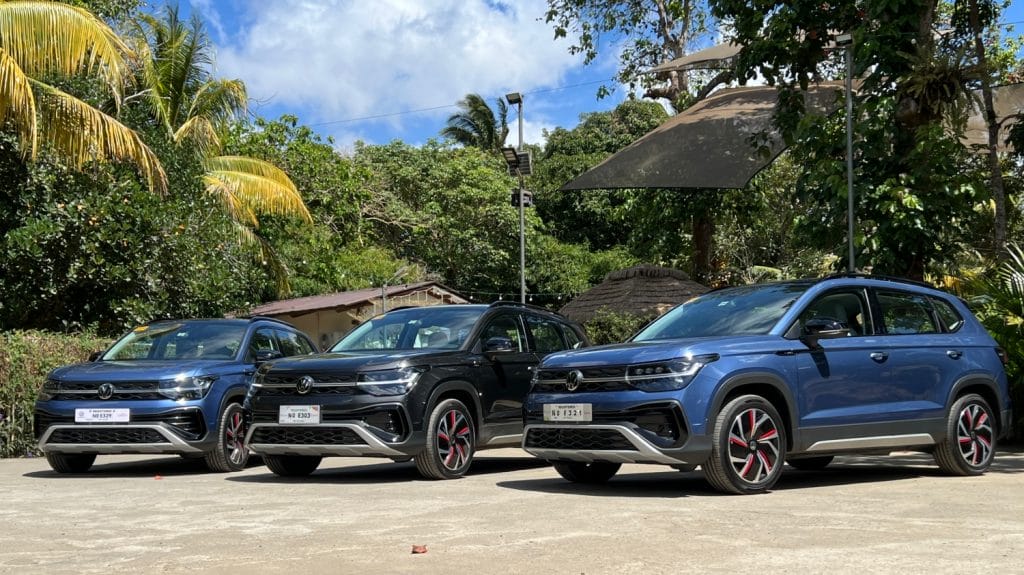
The Volkswagen Tharu not only defied my expectations, it kept giving me wonderful surprises along the way. It’s not perfect but this attention to detail is something that I definitely missed in cars today. I feel like this is their real next step after the Santana-Lamando batch with its traditional styling, modern appeal, a powerful engine, and a cabin that will surely captivate you. It reminds me of the iPhone in that if you’re holding one, you’re not thinking where it’s made and you just enjoy the experience. It’s the same with the Tharu – all I could think of was it’s a great Volkswagen.

